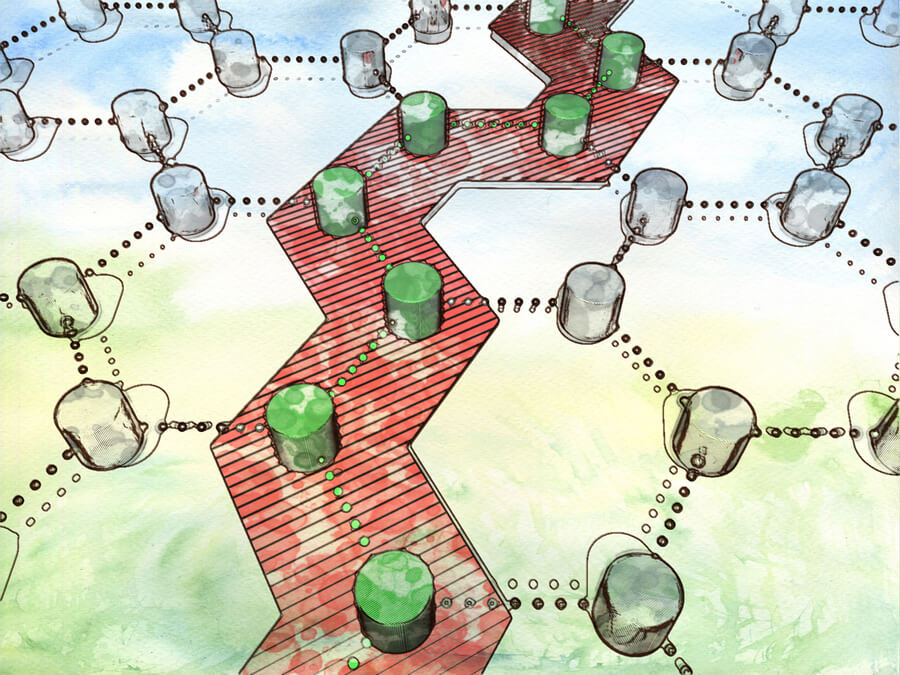Believe it or not, there are some college campuses in the United States that do not offer WiFi in their residence halls! There’s something about connecting an Ethernet cord to your laptop to research a paper about the future of nanotechnology or another innovative science just doesn’t gel. And while some college campuses are slow to adapt, there are plenty of industries looking beyond routers (also known as access points – which can refer to either a wireless AP or a standard AP) and central hubs to explore the up-and-coming world of WiFi mesh technology. The next generation of WiFi is here, and it’s not just about hotspots.
What Is WiFi Mesh?
There are a couple of ways to think about WiFi mesh, and a couple of key terms to understand before diving in. A wireless mesh network connects individuals, companies, and in some cases, cities or towns to a communication network. If a college campus began using wireless mesh instead of Ethernet cords, or even instead of WiFi powered by routers, the campus would be entirely connected without purchasing hundreds or thousands of hubs. Students on a campus could communicate through Skype while taking the shuttle, walking to and from the gym, or in the middle of the quad. The shuttle itself might be connected to the network and the commuter patterns of students could be used to improve the experience for off-campus students. This is all made possible through the strategic placement of nodes.
What Is A Node?
Nodes are the arteries for which mesh networks pump decentralized connectivity. Cities with mesh networks install wireless nodes on street lamps that can then communicate to one another. Nodes are different from traditional routers because they are “smart.” What do we mean by “smart?” Well, with the ability to immediately and automatically connect to either the closest other node or the node with the best signal, these sensors make it possible for one piece of the system to fail without bringing down the entire network. In a traditional WiFi environment, if you’re working in the library and the router closest to you fails or gets unplugged, your work is paused until the connection is restored. But with a WiFi mesh network, you wouldn’t even know if the node closest to you failed because the signal would be picked up by the next closest in proximity – allowing you to continue your work uninterrupted.
What Does This Mean For The Future Of Business?
Aside from connecting college campuses, cities, and rural towns, WiFi mesh technology is revolutionizing the way data collection is possible. With wireless mesh, it is not only possible to Skype while riding public transportation, but to also count how many people take the subway, the bus system, or commute via car. And it’s possible to do so without a central access point! The possibilities are truly endless. Think about other ways businesses can use technology which allows devices to talk to each other. Equipment in a hospital, inventory in a warehouse, and cars on a highway are all examples of how WiFi mesh can change the way we view the world around us, and make smarter choices when it comes to providing products and services.

Product Engineering Services Customized software development services for diverse domains
Quality Assurance End-to-end quality assurance and testing services
Managed Services Achieve scalability, operational efficiency and business continuity
Technology Consulting & Architecture Leverage the extensive knowledge of our Domain Experts





